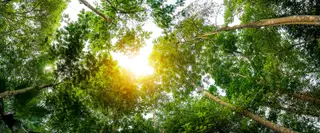Dealing with one problem, that of climate change, shouldn´t give rise to others such as the loss of biodiversity or an increase in social inequalities. These are the main conclusions drawn by Júlia Seixas, president of the Nova University Lisbon School of Sciences and Technology (FCT/UNL) Department of Environmental Sciences and Engineering, from the most recent Annual Conference of the Portuguese Association of Energy Economics (APEEN 2021), dedicated to energy transition and sustainability.
The event was attended by researchers from both Portugal and countries including Germany, France, Brazil and Spain, and was aimed at drawing attention to the impacts of energy transition on sustainability. “The conference featured a session dedicated to the analysis of the life cycle of energy technologies and another on how energy transformation takes place at the city level”, among others, points out Júlia Seixas, highlighting the topic chosen by John Drexhage, a senior consultant at the World Bank, who drew attention to current and future problems with regard to the exploration and production of the minerals needed for wind turbines, photovoltaic cells and batteries, some of the technologies needed to harness renewable energy and to store electricity.
Júlia Seixas stresses the need to create public policies and guidelines to ensure “everyone” is included in energy transition. “All you need to do is to think about electric mobility, as the new technologies on the market are far more expensive than the previous ones and, therefore, only accessible to families with greater financial means”, she explains, adding that we can´t allow the idea to spread that only people with more resources behave in a responsible manner and are aligned and committed to energy transition. “That mustn´t happen”, she says.
Another of the areas highlighted by Júlia Seixas, where energy transition can lead to the loss of biodiversity, is that of solar energy, with the possibility of implementing large solar fields in areas covered by scrubland and forests, with significant benefits for the environment and national biodiversity, and which will be cleared of all vegetation. “We need to be careful when considering these investments, as these areas will be occupied for 25 to 30 years and will no longer have any agricultural or ecological value”.
THE WORLD BANK IN ACTION
The World Bank report entitled “Minerals for Climate Action: the Mineral Intensity of Clean Energy Transition” reveals that the production of minerals such as graphite, lithium and cobalt could increase by almost 500% by 2050 in order to meet the growing demand for clean energy technologies. It also estimates that more than three billion tons of minerals and metals will be needed to produce wind, solar and geothermal energy, and to store the energy needed to restrict the rise in temperature to below 2 °C in relation to the values registered in the 1990s. According to Júlia Seixas, we need to understand how energy transition, which needs this type of technology, can be implemented without compromising vast areas of nature, as is already happening in China and Latin America. The World Bank's Climate-Smart Mining initiative, mentioned by John Drexhage at the Annual Conference of the Portuguese Energy Economy Association, aims to help resource-rich developing countries benefit from the growing demand for minerals through technical support and investment in the sustainable extraction and processing of minerals and metals, to guarantee the supply of clean energy technologies and to minimise the social, environmental and climate footprint of this activity throughout the value chain.
